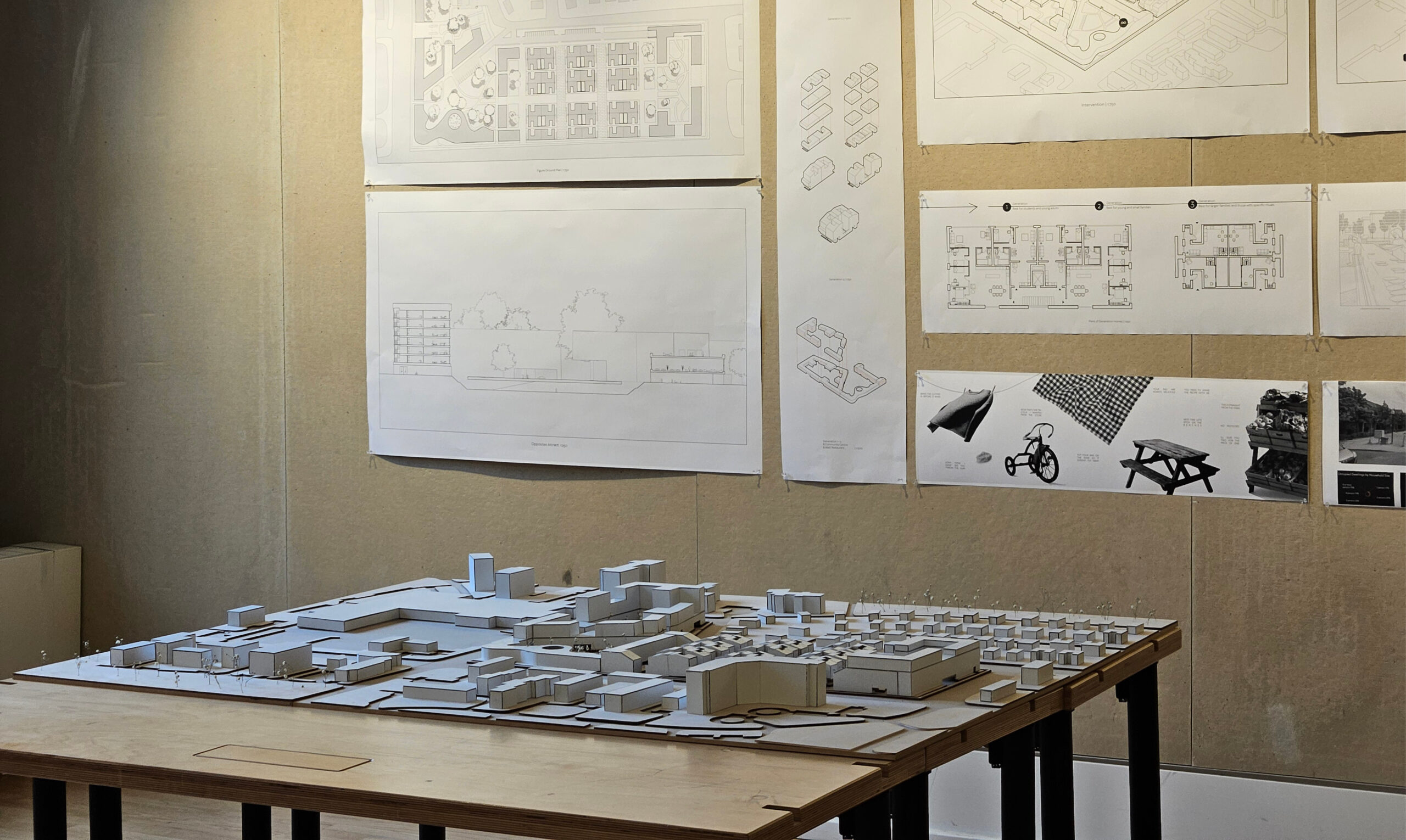How can the lived experiences and aspirations of a community affect form? And what strategies can be implemented to design generous spaces that reflect the values and rituals of the individuals residing within them? Confronting the drive for greater density in suburban areas, this thesis engages the redevelopment of a large site at Dundas Street West and Erindale Station Road, considering whether the identity of a place and its collective memory can be transposed to a new configuration of forms. Gleaning insights from interviews with residents, their inherited wisdom from interacting with the environment takes precedence in guiding future habitations.
Starting from a conversation with a friend, who expressed their concern about their townhouse community facing demolition, the land’s underutilization and prime location for increased density has spurred proposals to erect additional apartments like those nearby. Unfortunately, this initiative disregards the distinctive community and character of the townhouse complex, featuring residents whose tenancy has spanned generations and varying family transitions (20+ years). Moreover, nearby residents in the adjacent apartment buildings and single-family houses also share an affinity for the community, through their utilization of its central courtyard and their active participation in the programming and events organized by the inhabitants of the townhouse complex.
Addressing present and future needs, the thesis proposes “Generation 1, 2, & 3 homes.” Inspired by the adaptive practices of founding families and responding to the area’s evolving demographics, these residences accommodate the needs of different families while simultaneously increasing density. Additionally, the proposed urban plan advocates for self-governance through collectively owned spaces such as a community centre and courtyards to foster resident pride and autonomy.
Highlighting the overlooked and underestimated, this thesis asserts these very aspects—from humble conversations to examinations of the site’s character—to yield the most exceptional insights into crafting generous spaces.












